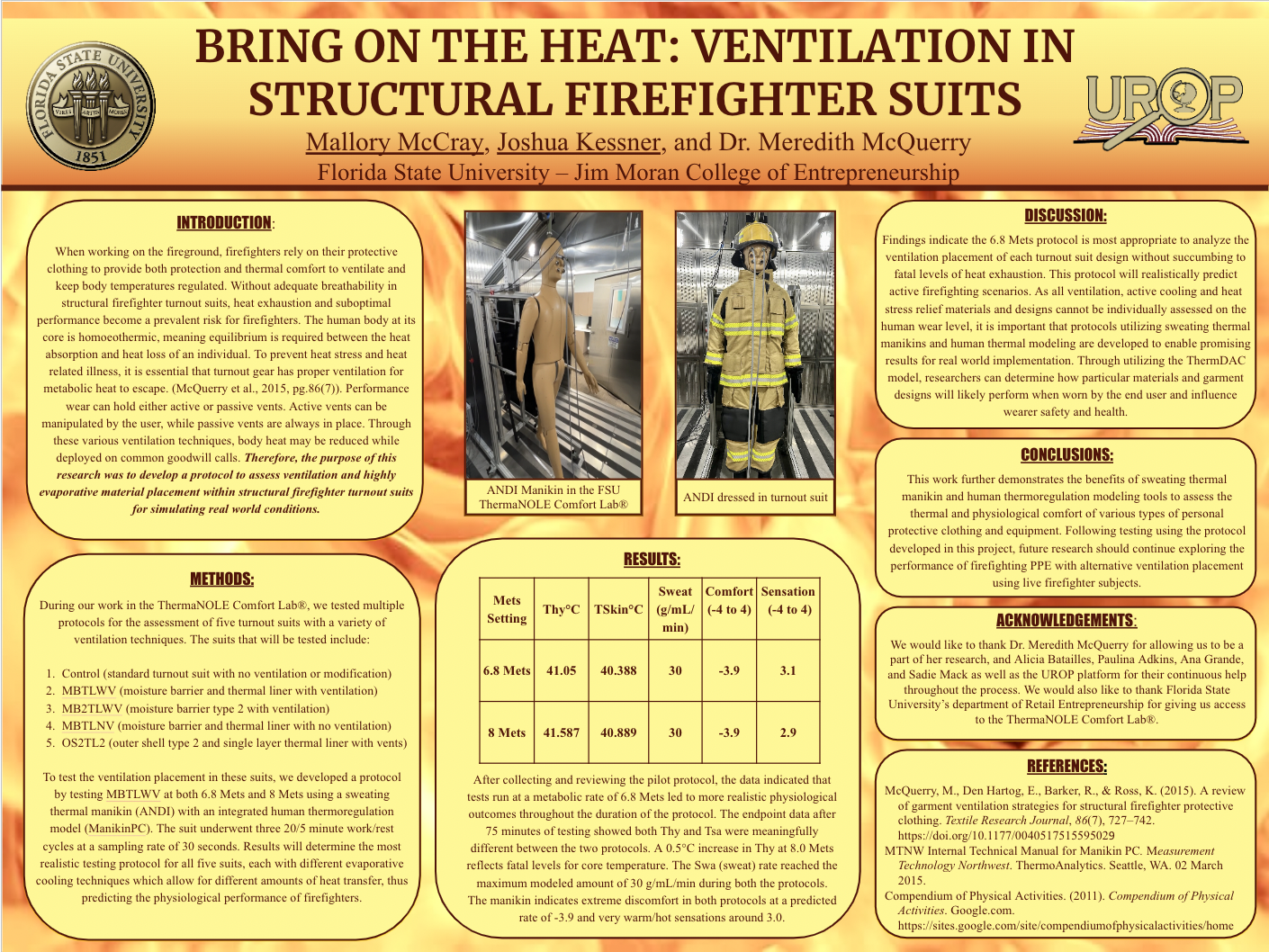Research Symposium
24th annual Undergraduate Research Symposium, April 3, 2024
Mallory McCray Poster Session 2: 10:45 am - 11:45 am/38
BIO
As a second-year student studying Business Management and Political Science, with a minor in Psychology, Mallory plans to graduate from Florida State University in the Spring of 2025 and continue her education in law school. Coming into UROP without prior research experience, Mallory chose her project based on her mentor and her primary goal of learning proper research and analysis techniques. Alongside her research, Mallory is involved in Phi Alpha Delta Pre-Law Fraternity and Alpha Kappa Psi Business Fraternity at FSU, as well as having experience working in the real estate industry, legal field, and restaurant environment.
Bring On The Heat: Ventilation in Structural Firefighter Suits
Authors: Mallory McCray, Dr. Meredith McQuerryStudent Major: Business Management and Political Science
Mentor: Dr. Meredith McQuerry
Mentor's Department: N/A Mentor's College: Jim Moran College of Entrepreneurship Co-Presenters: Joshua Kessner
Abstract
When working within the fireground, firefighters rely on their protective gear to provide thermal protection while maintaining thermoregulation to prevent overexertion and heat stress. Without proper breathability, heat exhaustion and suboptimal performance become a prevalent danger for firefighters. Therefore, the purpose of this research was to develop a protocol to assess ventilation and unique evaporative material placement within structural firefighter turnout suits for their ability to increase total heat loss (THL). One of five ensembles (turnout coat and pants) was assessed using an ANDI dynamic sweating thermal manikin in the ThermaNOLE Comfort Lab® at Florida State University. The ensemble underwent three twenty-to-five minute work/rest cycles at both 6.8 Mets and 8 Mets utilizing a human thermal model (ManikinPC) integrated into the manikin’s ThermDAC software. Predicted measurements for core temperature, skin temperature, and sweat rate were collected along with subjective perceptions of comfort and sensation. Findings indicate the 6.8 Mets protocol is most appropriate to analyze ventilation placement of each turnout suit design without succumbing to fatal levels of heat exhaustion. As this protocol realistically predicts active firefighting scenarios, future research should use an ANDI dynamic sweating thermal manikin at 6.8 Mets to test the five ensembles, each with different evaporative cooling techniques which allow for different amounts of heat transfer, thus predicting the physiological performance of firefighters.
Keywords: Firefighters, Ventilation, Structural Turnout Suits


